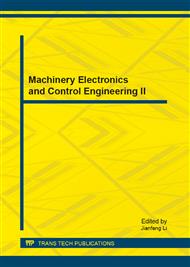p.1046
p.1051
p.1055
p.1060
p.1064
p.1069
p.1074
p.1078
p.1082
Three-Channel Control for the Depth of AUV and its Dynamic Performance Simulation
Abstract:
The autonomous underwater vehicle can be affected by sea flow and other factors when in a motion to a certain fixed depth. To guarantee the stability of cruise trajectory of autonomous underwater vehicle and considering the influence of sea flow on its motion, the underwater six-free-degree motion mathematical model for the vehicle is established in combination with the sea flow model. Besides, dynamic features of the longitudinal plane, horizontal plane and crosswise-rolling of the vehicle at different navigation speeds are simulated with the three-channel closed-loop control system. The simulation result indicates that the vehicle can move stably at a certain depth and with the achieved accuracy by means of closed-loop control.
Info:
Periodical:
Pages:
1064-1068
Citation:
Online since:
March 2013
Authors:
Price:
Сopyright:
© 2013 Trans Tech Publications Ltd. All Rights Reserved
Share:
Citation:


